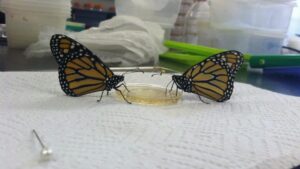In 1964, renowned biologists Peter Raven and Paul Erhlich published a landmark study that introduced the concept of co-evolution. Using butterflies and plants as primary examples, the team determined that two species can reciprocally drive each other’s evolution and development. Now, an international team of researchers led by the University of Missouri and Stockholm University has used cutting-edge genomics to analyze the co-evolution theory and identified the mechanisms responsible for this phenomenon.
Scientists believe that understanding how co-evolution works could help provide genetic clues for producing heartier plants and food for a growing global population.
The research team gained insight into how the genetic basis of co-evolution between butterflies and cabbage plants was driven by new copies of genes rather than simple mutations on the strands of DNA of both species. This determination can provide new possibilities for creating more pest-resistant plants and potential food sources.
More information is available here: http://www.eurekalert.org/pub_releases/2015-06/uom-gso062215.php
Scientists believe that understanding how co-evolution works could help provide genetic clues for producing heartier plants and food for a growing global population.
The research team gained insight into how the genetic basis of co-evolution between butterflies and cabbage plants was driven by new copies of genes rather than simple mutations on the strands of DNA of both species. This determination can provide new possibilities for creating more pest-resistant plants and potential food sources.
More information is available here: http://www.eurekalert.org/pub_releases/2015-06/uom-gso062215.php












